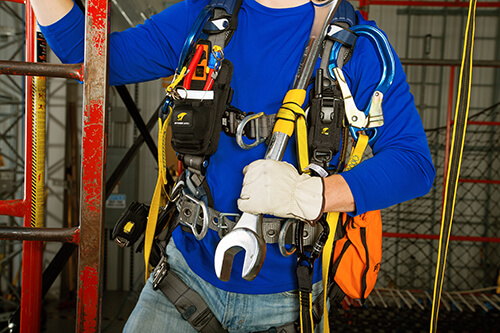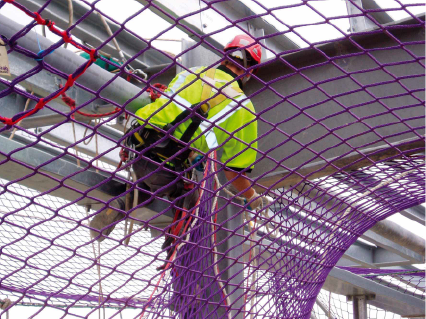
Fall Protection Is Not Just for People
August 25, 2017
 Worker fall protection is a serious issue within the safety industry. In this day and age, most companies are aware that they must provide their workers with proper fall protection when working at height to comply with OSHA and ANSI regulations. However, the same consideration must extend to the tools their workers are using. This consideration is vital to protect not just workers at height, but people who may be passing through the work zone below.
Worker fall protection is a serious issue within the safety industry. In this day and age, most companies are aware that they must provide their workers with proper fall protection when working at height to comply with OSHA and ANSI regulations. However, the same consideration must extend to the tools their workers are using. This consideration is vital to protect not just workers at height, but people who may be passing through the work zone below.
According to the Bureau of Labor Statistics, OSHA records more than 50,000 “struck by falling object” incidents every year in the United States. That is far too many preventable incidents. A stance must be taken when it comes to protecting workers or bystanders from being injured by fallen tools.
At elevated work environments, it’s not surprising that materials may not be as secure as the workers using them. After all, it’s better to lose a tool than to lose a life, but that tool might hit someone on the ground. The weight of an object, along with the height at which it is dropped, play a role in the degree of impact. For example, a rain drop’s terminal velocity will reach somewhere between 15-20 miles-per-hour (mph), and a penny’s terminal velocity will reach around 30-50 mph depending on the height at which its dropped. Now imagine dropping a tool that weighs more, like a wrench or piping. Heavier objects dropped reach much higher velocities, sometimes exceeding 200 mph, which results in fatal outcomes. Until work materials and equipment are secured with the same amount of diligence that workers are, fall prevention for tools will continue to fail.
Even with the warnings from OSHA statistics, necessary precautions to prevent workplace falls are not taking place, despite the fact that these violations could easily be prevented with the proper fall protection program and system. Preventative measures do not exclusively extend to workers, but also tools. It’s not hard to implement these measures. Companies need to umbrella tools and materials under their fall protection systems and provide workers with proper fall protection equipment for both themselves and their tools. This effort won’t just save the life of a worker, but may save the life of an innocent bystander.
Prevention is Protection
 The best way to ensure tools, materials, and workers are secure is to provide workers with proper personal protective equipment (PPE) when in work zones. Choosing the correct type of PPE in size, weight, and fit is vital. If PPE hinders the work that needs to be completed, workers are less likely to use it properly. Ultimately, comfortable and practical PPE helps prevent possible misuse. Additionally, ensuring that your PPE is properly calibrated for the weight of your tools is important. For example, if a harness is rated for 310 pounds, the weight of the worker and the tools they will be using need to be included.
The best way to ensure tools, materials, and workers are secure is to provide workers with proper personal protective equipment (PPE) when in work zones. Choosing the correct type of PPE in size, weight, and fit is vital. If PPE hinders the work that needs to be completed, workers are less likely to use it properly. Ultimately, comfortable and practical PPE helps prevent possible misuse. Additionally, ensuring that your PPE is properly calibrated for the weight of your tools is important. For example, if a harness is rated for 310 pounds, the weight of the worker and the tools they will be using need to be included.

To maximize safety, determine the fall zone of your worksite and place barricades and warning signs properly. OSHA requires the use of toe boards, screens, and scaffolding to prevent falling objects. In addition to preventing an object from falling, using nets and other catch platforms will cut down the risk of injury to those on the ground.
Elevated worksites should also utilize tethering tools to their full-body harnesses for preventative measures. Some tools are manufactured with features that allow the user to connect the tools to a lanyard for safety. When choosing your workplace equipment, it is a good idea to guarantee that your tools will integrate with your fall protection system and equipment.
Categories
Share this post
Let us help you
Contact us today to find the perfect product fit for your job
